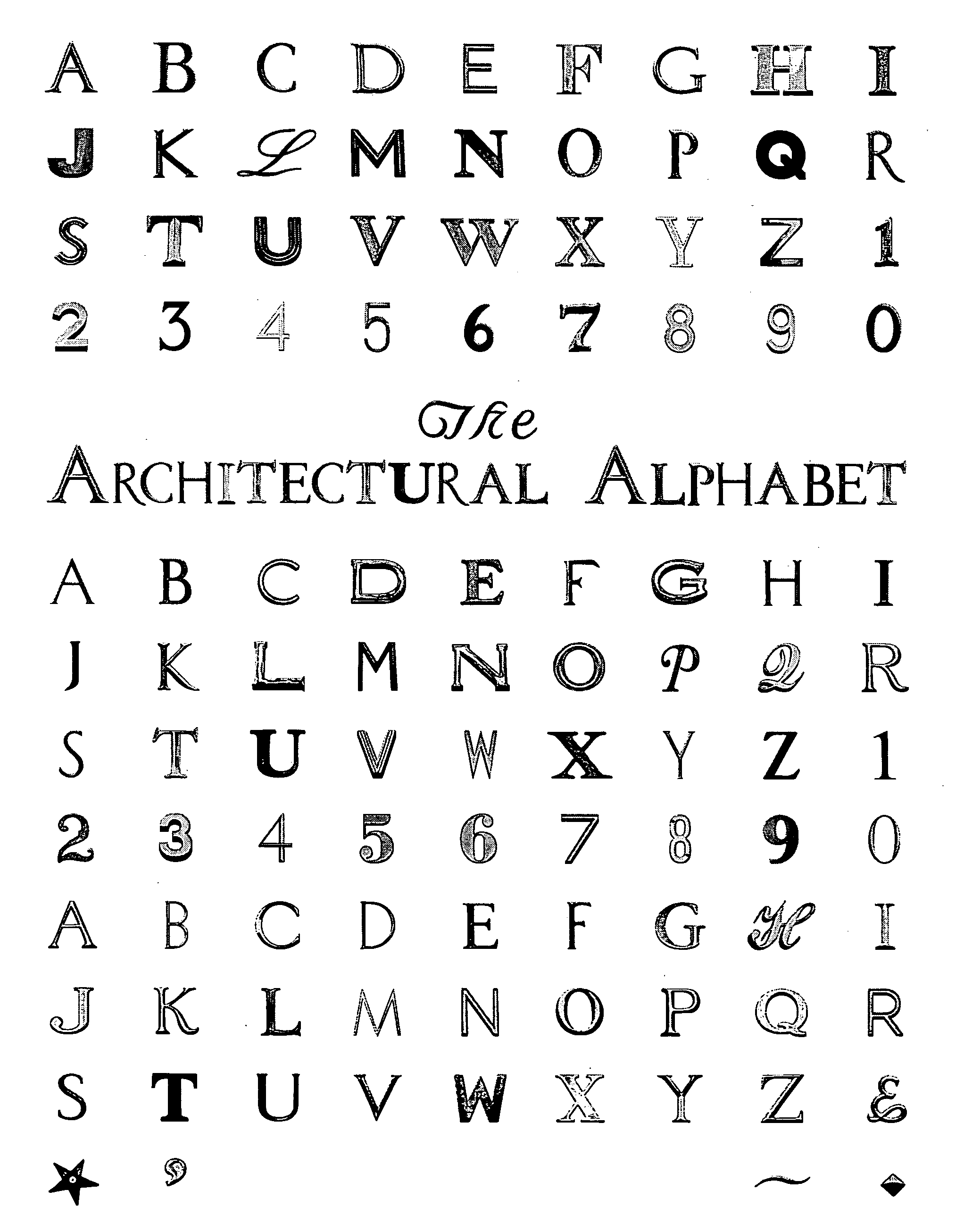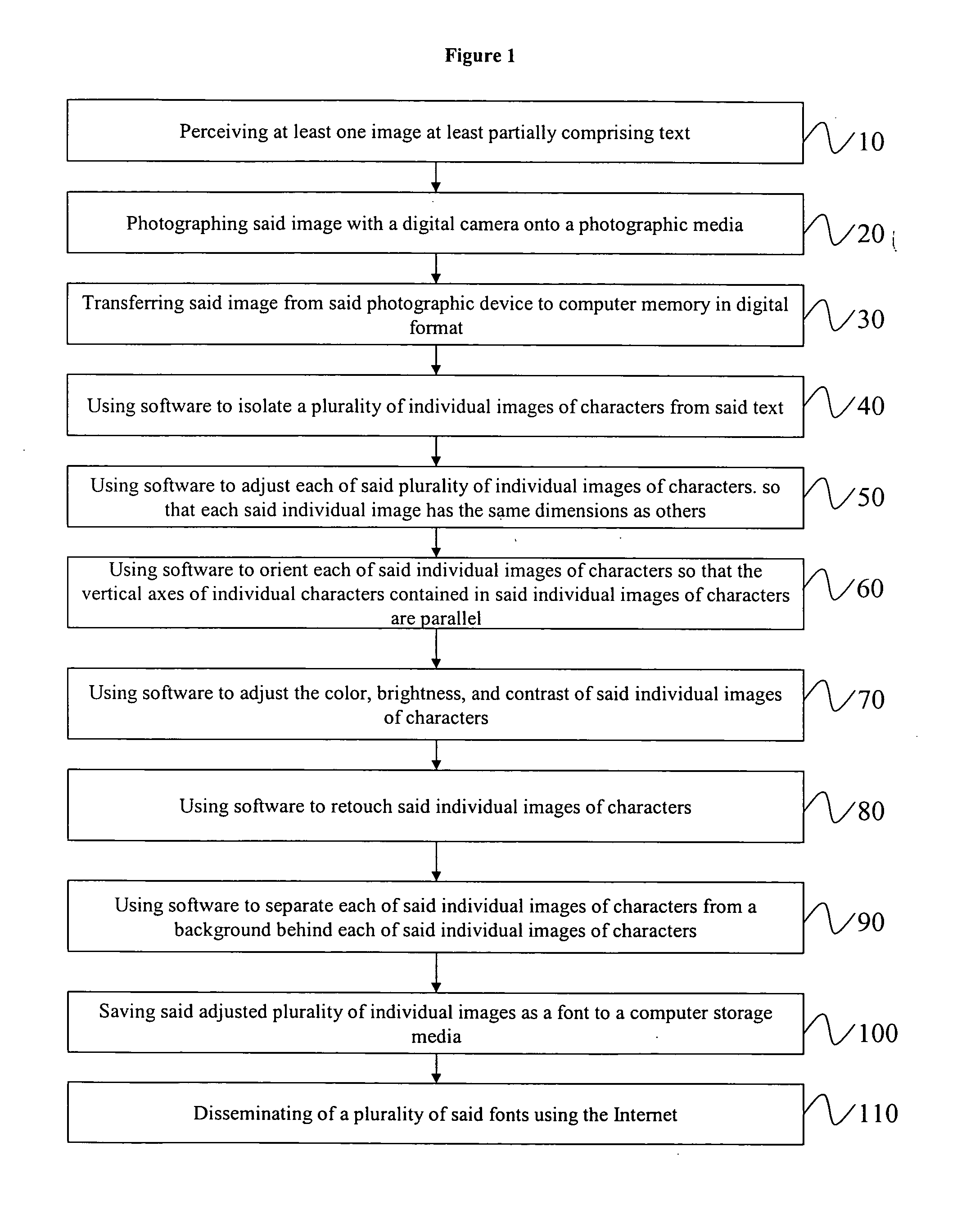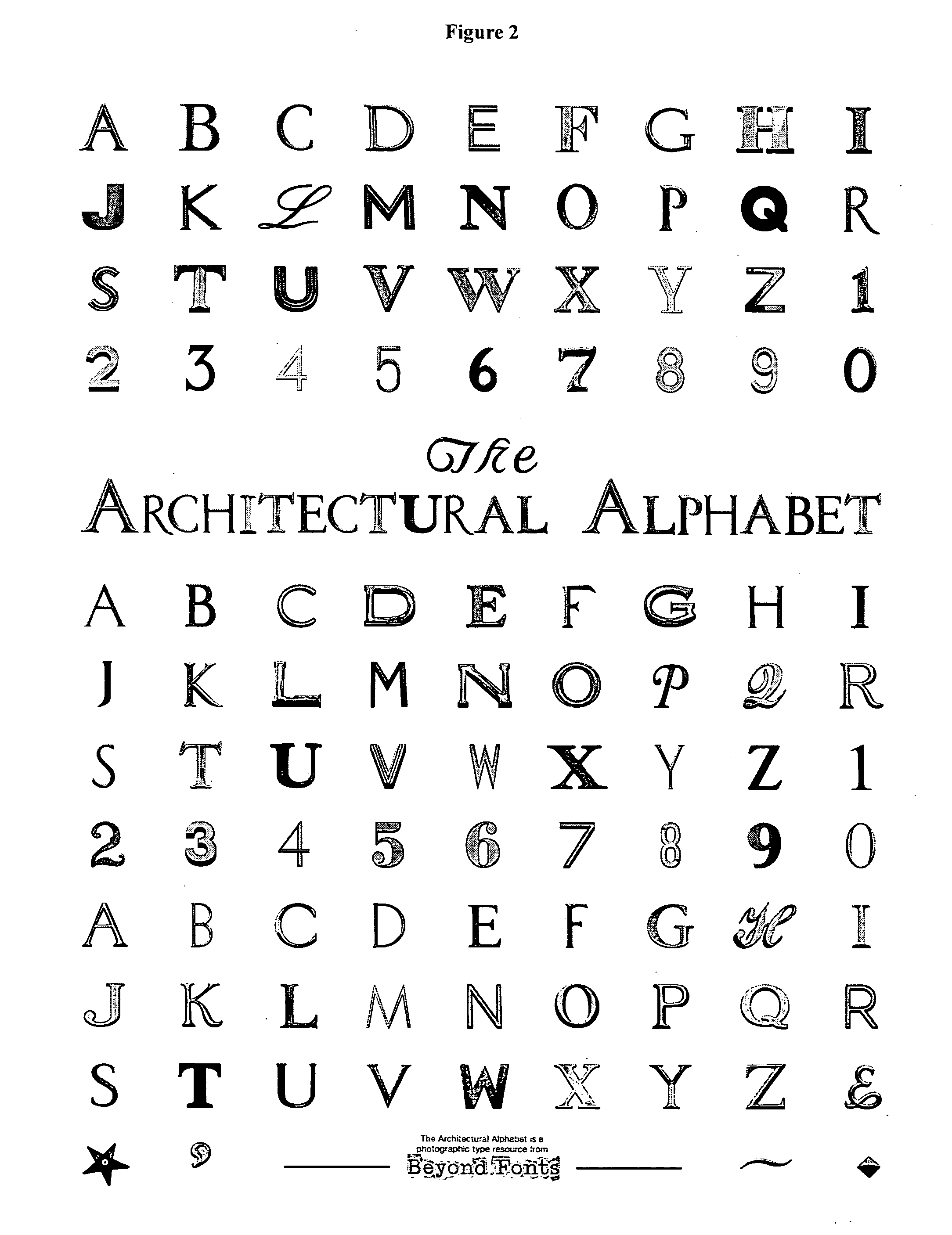Method and system for creating, modifying, and storing photographic fonts
a technology of photographic fonts and fonts, applied in the field of photographic fonts, can solve the problems of limiting the creative use of graphic designers and others, limiting the creative use of type in a creative way, and evolving traditional fonts, such as those that appear in books, and achieving the effects of minimization cost, maximization of creative expression, and easy access
- Summary
- Abstract
- Description
- Claims
- Application Information
AI Technical Summary
Benefits of technology
Problems solved by technology
Method used
Image
Examples
Embodiment Construction
[0029] The present invention allows for the transformation of characters located anywhere that the user of the invention can perceive and photograph such characters into photographic fonts. This environment includes, but is not limited to, lettering on objects or objects themselves, and includes but is not limited to buildings. Objects or shapes on objects that form the basic shape of letters or other alphanumeric or other text characters can be used as a basis for a photographic font.
[0030] Referring to FIG. 1, objects or shapes on objects that contain or comprise text-like shapes are perceived by the photographer as shown in step 10 of FIG. 1, and photography is then used to capture an image of each of the objects along with its corresponding background in step 20 of FIG. 1. In one embodiment, the objects or shapes on objects share some similar characteristics, rendering them consistent for purposes of creating a font. For example, the photographer might choose characters on taxi...
PUM
 Login to View More
Login to View More Abstract
Description
Claims
Application Information
 Login to View More
Login to View More - R&D
- Intellectual Property
- Life Sciences
- Materials
- Tech Scout
- Unparalleled Data Quality
- Higher Quality Content
- 60% Fewer Hallucinations
Browse by: Latest US Patents, China's latest patents, Technical Efficacy Thesaurus, Application Domain, Technology Topic, Popular Technical Reports.
© 2025 PatSnap. All rights reserved.Legal|Privacy policy|Modern Slavery Act Transparency Statement|Sitemap|About US| Contact US: help@patsnap.com



